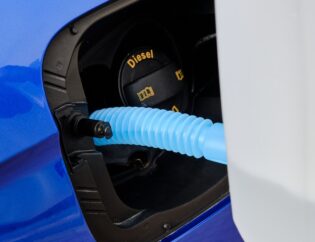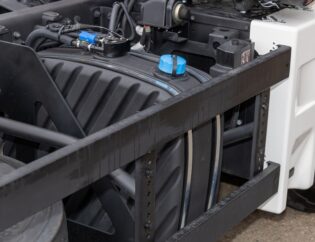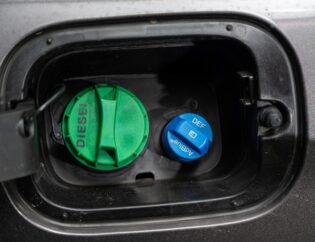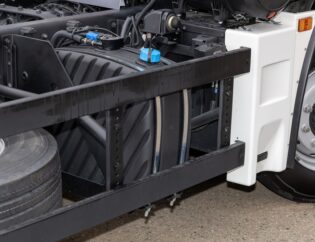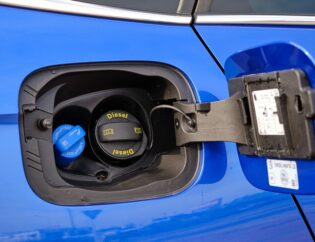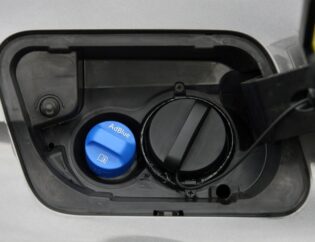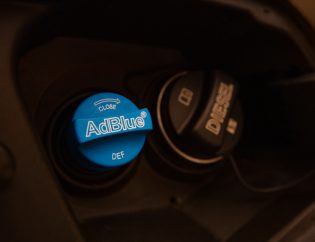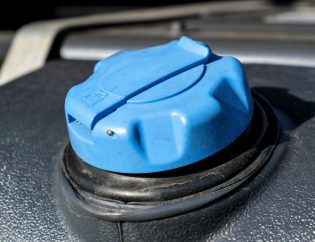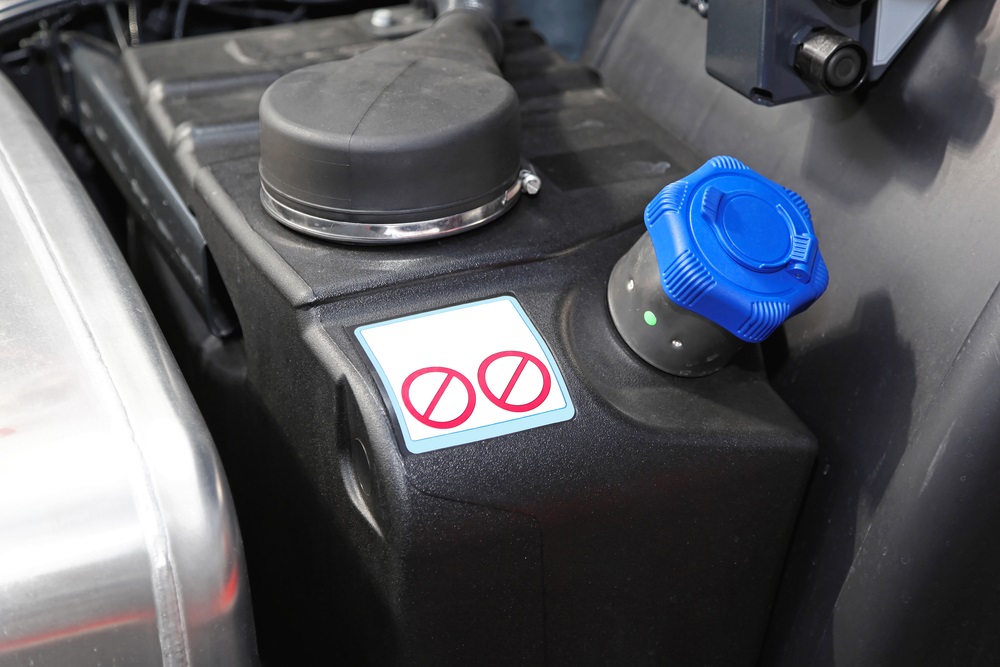
It helps lower the emissions of harmful nitrogen oxide (NOx) gases that contribute to air pollution and smog. Checking and maintaining proper DEF levels is crucial for keeping diesel engines running efficiently.
DEF must be kept between certain levels for the emissions system to work properly. Running low on DEF can lead to reduced engine power and speed limitations to encourage adding more fluid. Having too much DEF can also cause problems. This article provides an overview of properly checking DEF levels and maintaining the optimal amount. Knowing how to inspect DEF levels and top it off when needed will help diesel owners keep their trucks, tractors, buses, and other vehicles running cleanly. We’ll explore it all in this article by Azure Chemical.
Contents
Checking DEF Level
There are a few different methods for checking your diesel exhaust fluid (DEF) level, depending on your vehicle type.

Locate the DEF Tank
The first step is to locate the DEF tank. This is usually a separate tank from the fuel tank, often blue. The DEF tank is normally located at:
- Under the vehicle cabin near the fuel tank
- Behind the fuel fill access door
- Next to the fuel fill pipe
Consult your owner’s manual if you need help finding the DEF tank.
DEF Gauge
Many newer diesel vehicles have a DEF gauge on the instrument cluster that shows the fluid level. This gauge allows you to monitor the DEF level from inside the vehicle. If the gauge is low, refilling the DEF tank is time.
DEF Dipstick
Some vehicles may have a DEF dipstick for manually checking the fluid level. The dipstick is often blue and located near the fill cap on top of the DEF tank. To check the level:
- Make sure the vehicle is on level ground.
- Remove the dipstick and wipe it off with a clean cloth.
- Reinsert the dipstick fully into the fill neck.
- Slowly remove the dipstick and check the fluid level. It should be between the “Full” and “Refill” lines.
Electronic DEF Monitoring
Many modern diesel vehicles have electronic DEF monitoring systems that use a sensor in the tank to detect the fluid level. The DEF level is displayed on the dashboard or infotainment screen. Check your owner’s manual for instructions on accessing this info to check the DEF level.
If any method shows a low DEF tank, you must refill it soon. Let’s look at that next.
DEF Gauge
Most diesel vehicles with DEF systems have a dedicated DEF gauge on the instrument cluster. This allows you to monitor the DEF level at a glance while driving easily.
The DEF gauge is typically located near the fuel and temperature gauges on the instrument panel. It may read as a percentage, with 100% indicating a full tank and 0% meaning empty. Some gauges show level bars that decrease as the tank empties.
Check your vehicle’s owner’s manual to learn where the DEF gauge is positioned. It’s important to become familiar with its location to routinely check while operating the vehicle.
To accurately read the DEF gauge:
- Make sure the vehicle is on level ground. An angled parking surface can provide false readings.
- Allow the gauge to stabilize for a few seconds once the engine runs.
- Understand gauge behavior. The needle may bounce around somewhat, especially if fluid is low. Look for overall range and trends.
- Note warning lights. Some vehicles will illuminate a warning light when DEF is running very low.
- Consider refilling if the gauge is below 10-20%. Do not let it reach 0%.
Check the DEF gauge regularly when operating your diesel vehicle. Top off the DEF if the gauge indicates a low level. This helps avoid running out of fluid and sustaining costly DEF system damage.
DEF Dipstick
How to check diesel exhaust fluid level? One way is with the DEF dipstick.
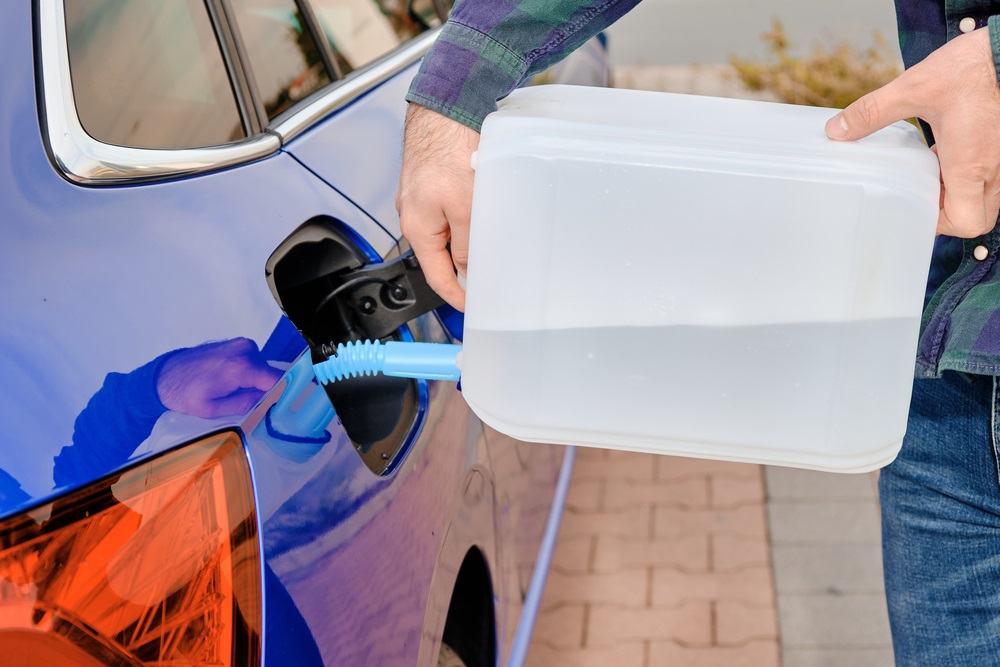
Here’s how to properly check the DEF level using the dipstick:
- Locate the DEF dipstick, usually colored blue and found near the engine oil dipstick.
- Make sure the vehicle is on level ground when checking the DEF level.
- Remove the dipstick and wipe it off with a clean cloth.
- Reinsert the dipstick fully into the DEF tank.
- Slowly pull the dipstick back out. Examine the level of DEF fluid on the dipstick.
- The fluid level should be within the operating range marked on the dipstick. Stay within the maximum line.
- If the fluid is at or below the minimum line, you’ll need to add more DEF soon.
- Insert the dipstick back into the tank fully when done checking the level.
It’s important to check the DEF level according to the vehicle manufacturer’s recommended service schedule. Checking with the dipstick takes just a minute and ensures the DEF tank has sufficient fluid. Running low on DEF can lead to power loss or engine damage.
Electronic DEF Monitoring
Many modern diesel vehicles have electronic DEF monitoring systems that provide constant feedback on the DEF level.
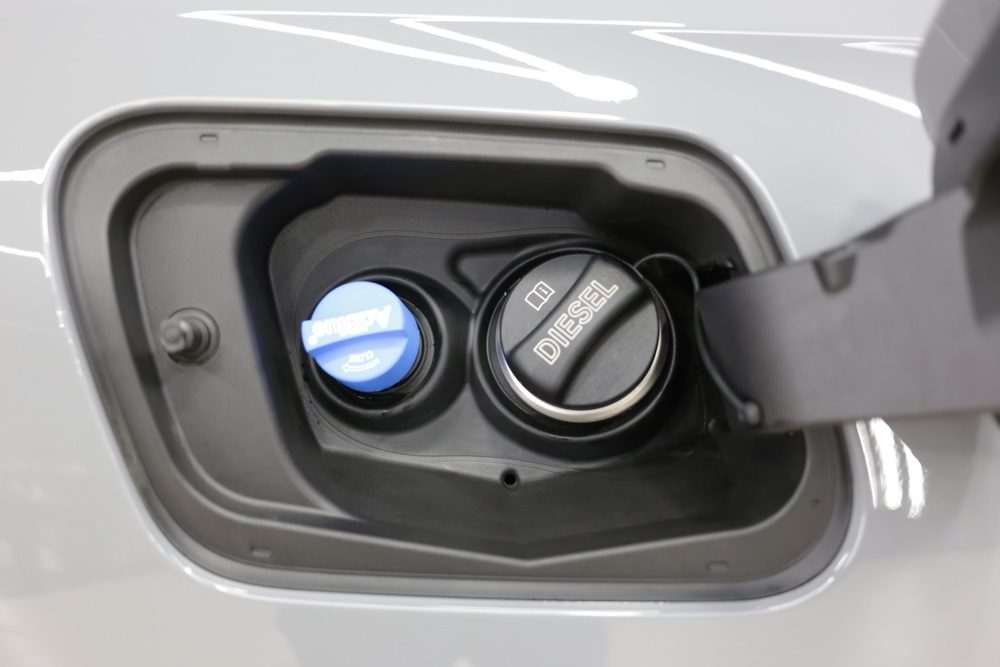
This allows drivers to check the DEF level right from the dashboard easily.
Dashboard screens and infotainment displays will show the current DEF level, often as a percentage of the tank’s capacity. Some systems use diagrams of the DEF tank that fills or drains to indicate the level. Drivers can conveniently check this display to see if the DEF needs refilling.
In addition to monitoring the level, electronic DEF systems provide warnings and alerts about the DEF. As the DEF level drops, the vehicle’s computer will trigger incremental warnings advising the driver to refill the tank soon. These may start as simple messages and progress to more urgent warnings with sounds as the level gets critically low.
If the DEF level becomes extremely low, below a certain threshold, like 10%, the system may limit the vehicle’s speed or power. This forces the driver to add DEF before operating the vehicle normally. Avoiding this derate condition is a prime reason to regularly check DEF levels electronically.
Electronic DEF monitoring takes the guesswork out of checking fluid levels. Drivers don’t have to dip and measure the DEF tank manually. The dashboard provides real-time DEF status for convenience and preventative maintenance. Paying attention to electronic DEF warnings ensures adequate DEF for proper emissions controls.
Adding DEF
Diesel Exhaust Fluid (DEF) needs to be replenished periodically to keep the DEF tank full. When the DEF gauge reads low, or you get a warning light indicating a low DEF level, it’s time to refill the tank. Use these tips for properly refilling your DEF tank:
– Only use DEF brands that meet ISO 22241 specifications. Look for certification on the container. Avoid no-name brands or DEF that don’t specify meeting ISO 22241.
– Check your owner’s manual for DEF filling instructions for your vehicle. In general, turn off the engine and locate the DEF fill inlet. It’s often near the diesel fuel fill nozzle.
– Thoroughly clean the area around the DEF fill inlet before opening. Debris and dirt can contaminate the tank.
– Slowly pour the DEF liquid into the fill inlet using the spout or nozzle on the DEF container. Avoid splashing or spilling. DEF can be corrosive to paint and surfaces.
– Fill the tank until the DEF gauge shows full or you get an alert the tank is full. Overfilling the tank can damage components.
– Tighten the DEF fill cap when finished and wipe up any spills.
– Double-check that the cap is secure before driving. A loose cap can allow contaminants to enter the tank.
Properly refilling the DEF tank prevents defects and damage to the emissions system. Only use DEF meeting specifications and follow the filling procedure in your owner’s manual. This ensures the DEF tank remains full and the emissions system functions properly.
DEF Level Too Low
If the DEF level becomes too low, it can cause serious issues with the diesel engine and emissions control system. Here are some key things to know:
– The engine’s computer system will detect the low DEF level and trigger a warning light or message on the dash. This indicates DEF needs to be added soon.
– If the DEF tank becomes empty, the vehicle will go into a reduced power mode. Engine power will be drastically cut back as a limp-home mode. This protects the emissions system but makes driving very slow.
– Prolonged driving with zero DEF can permanently damage the catalytic converter and diesel particulate filter. Replacing these emissions components is very expensive.
– Eventually, with no DEF added, the engine may go into a mode that cannot be restarted once turned off. This is to prevent emissions tampering.
To get the DEF level back up:
– Locate a diesel exhaust fluid filling station, truck stop, or auto parts store that sells DEF in containers. DEF is also sometimes called “AdBlue.”
– Carefully pour the DEF into the tank’s fill neck, usually a blue cap somewhere on the vehicle. Add enough to fill the tank based on your vehicle’s capacity.
– The warning lights should go off after driving a short distance once the DEF tank registers are full again. Monitor the level to ensure it stays topped off.
– If the warnings are not clear, have the DEF system diagnosed by a professional as a faulty sensor or issue that may be preventing normal operation.
Adding DEF promptly when the low level is indicated is crucial to avoid permanent damage and costly repairs. Keeping the tank filled prevents problems down the road.
DEF Level Too High
Adding too much DEF is also an issue. Overfilling the DEF tank can lead to the following problems:
Crystallization of DEF
When too concentrated, crystallization of DEF occurs and clog components of the DEF system, like sensors, lines, and injectors. This can cause errors, blockages, and other issues.
Tank Swelling
Overfilling expands the DEF tank, which can deform and crack the tank. This will lead to leaks and contamination.
Spills
Any overflow or spill of DEF from overfilling can crystallize when it dries. These crystals are corrosive and can damage components.
Waste of DEF
Any excess DEF beyond the tank’s capacity is wasted since there is no way to drain or extract it.
If you overfill the DEF tank, the only remedy is to remove the excess. Here’s how:
– Siphon out the excess DEF using a hand pump and store it in a sealed container for future use. Be sure to wear gloves and eye protection when siphoning.
– Soak up any spilled or crystallized DEF using rags. Rinse the areas with water.
– If the tank has swollen, replacement may be required. Seek auto technician help.
– Run the vehicle to allow the DEF system to consume the excess until it reaches a normal level.
Overfilling the DEF tank can lead to costly repairs and issues, so add only the recommended amount. Immediately remove any excess to avoid damage to your diesel exhaust system.
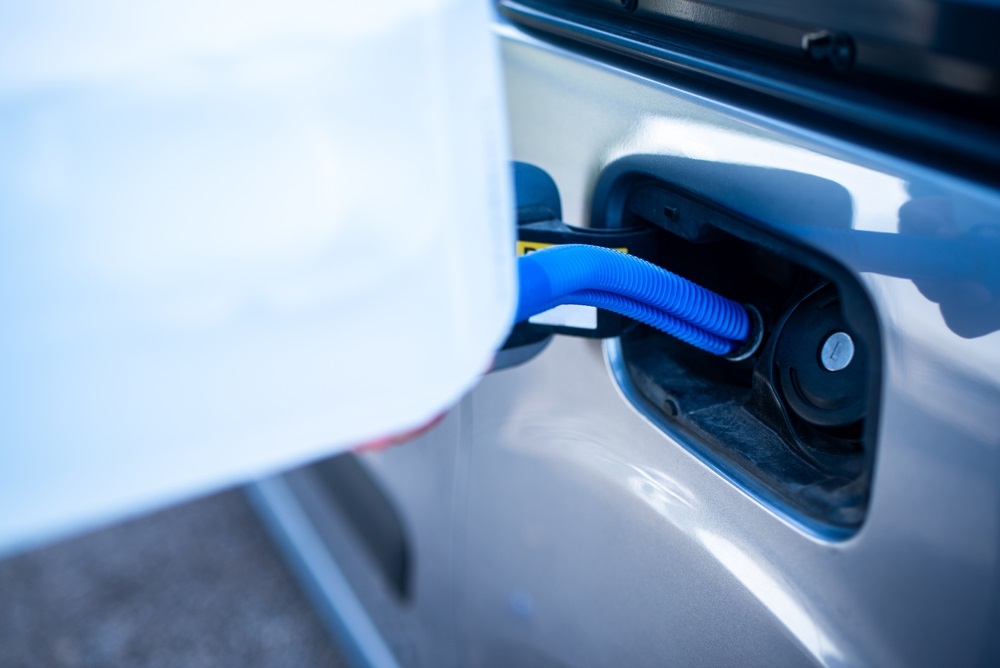
Frequently Asked Questions
Here are some of the questions which are answered by our experts:
How Can I Check The DEF Level?
Via the Dashboard: Most modern diesel vehicles have a DEF gauge on the dashboard that indicates the current fluid level, similar to a fuel gauge.
Physically Inspecting the DEF Tank: You can also check the DEF level by physically inspecting the DEF tank. Look for a blue cap that signifies the DEF fill port. Some vehicles are equipped with a dipstick or sight glass on the tank for this purpose.
What Should I Do If The DEF Level Is Low?
If the DEF level is low, it’s important to refill the tank as soon as possible. DEF is available at most automotive stores and service stations. Follow your vehicle’s manual for the correct filling procedure to avoid contamination or spillage.
Can I Drive My Vehicle If The DEF Tank Is Empty?
While you might be able to start and drive your vehicle for a short period, it is not advisable to do so without DEF. Driving without DEF can lead to increased emissions, and your vehicle might enter a reduced-performance mode or not start at all, depending on the manufacturer’s settings.
How Often Should I Check The DEF Level?
The frequency of checks depends on your vehicle’s make and model, as well as your driving habits. However, it is a good practice to check the DEF level regularly, such as at every oil change or service interval, to ensure optimal vehicle performance and compliance with emissions standards.
In Conclusion
The DEF system requires periodic maintenance and servicing to keep it functioning properly.
It is critical to have the DEF system serviced promptly when issues arise. Continuing to operate with problems can lead to permanent damage to exhaust components. Diesel vehicles have complex emissions systems that require specialized diagnostics and maintenance. Seeking help from a professional diesel mechanic as soon as possible can prevent costly repairs. Regular maintenance helps maximize the DEF system’s life and performance. Feel free to contact us right away if you have any other questions or are looking for high-quality DEF in your area.

